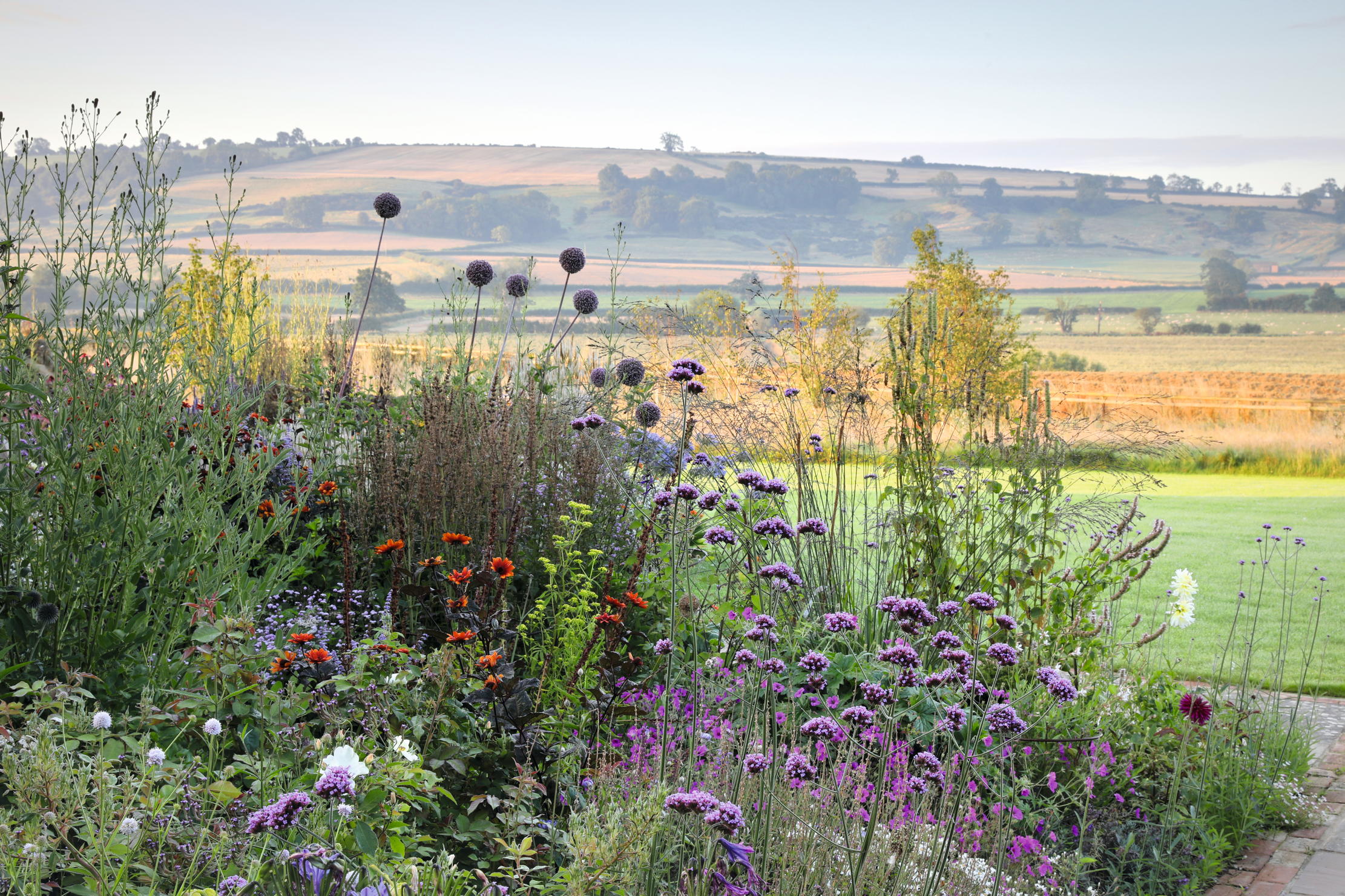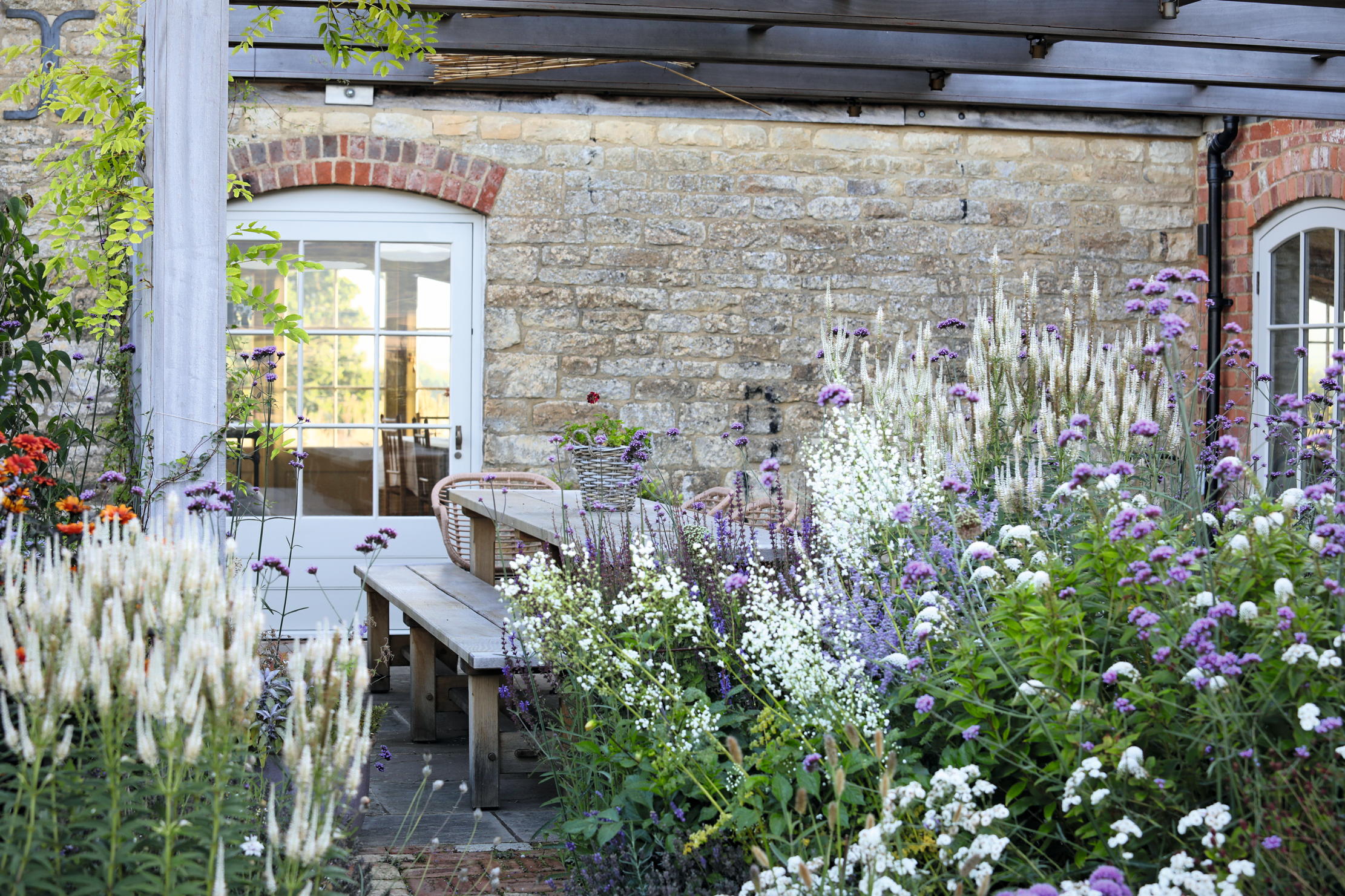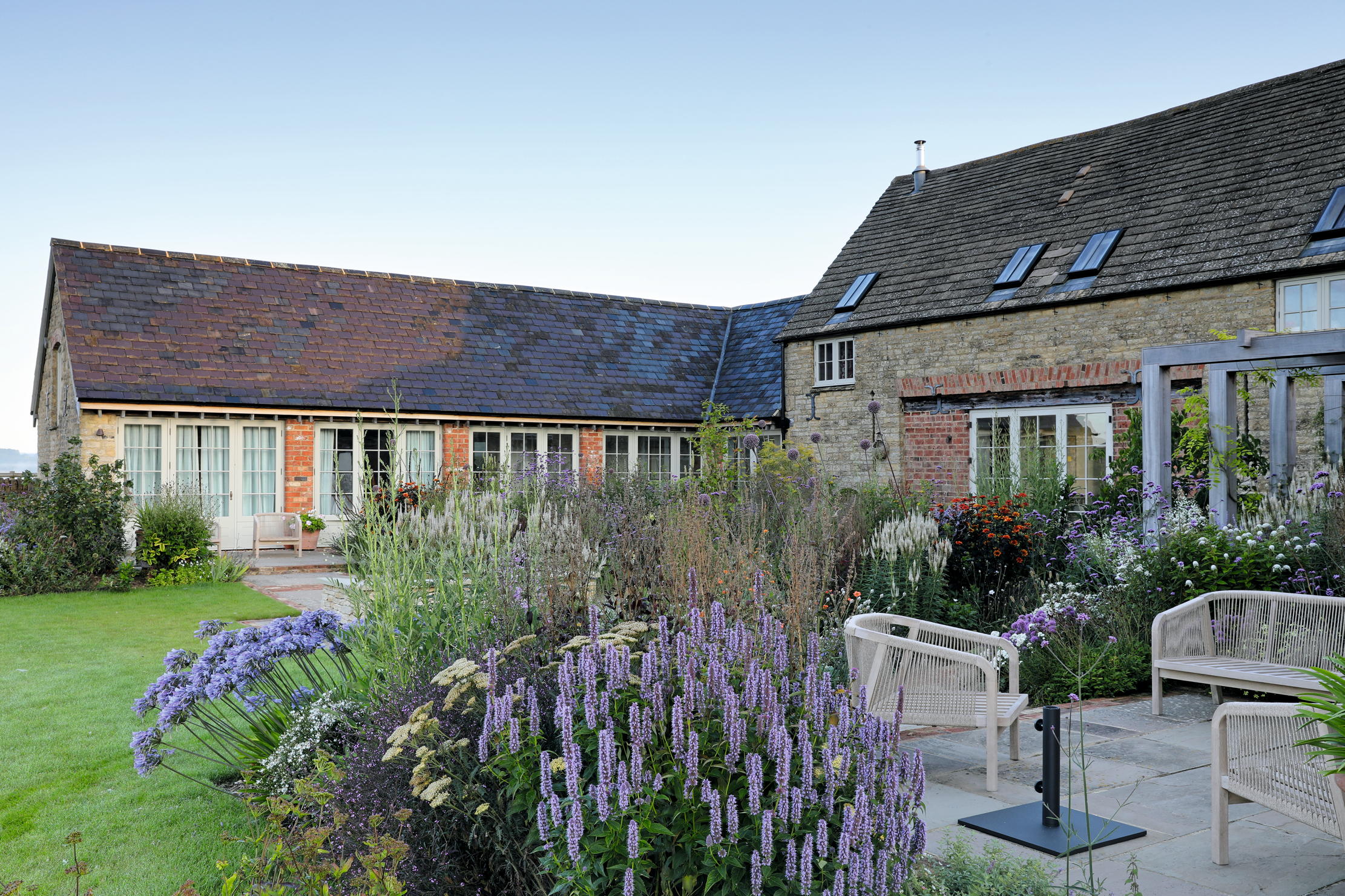The Cotswolds garden that's cleverly designed to defy the worst of the elements
Coates Barn in Warwickshire — home of the Sonneborn family — presented a challenge: how to lay out this exposed north-Cotswold site so as to protect new planting from the elements, and simultaneously provide a garden that three generations of residents could enjoy. Tiffany Daneff explains how they did it; photographs by Britt Willoughby Dyer.

Agricultural buildings are, as often as not, situated in places that were never intended for human habitation. That is fine, until they are converted into homes, at which point the drawbacks of their position are inevitably exposed. Coates Barn in the north Cotswolds is a case in point. It was converted into a large family house some years ago and has magnificent 360-degree views of the escarpment, but the same open aspect that allows for those views also means that there is little protection from the elements, including the winds that can swirl in from every direction.
When Mr and Mrs Sonneborn bought the house in 2021, they did so both as a home for themselves and as a place for their children and grandchildren to spend time together (they share it with their daughter and her family). To that end, they wanted to create a garden that would make the most of the views and provide protection for plants, as well as plenty of space for all the grown-ups and children.
At the south-facing back of the house was a small walled garden with a couple of paths bordered by lavender and some small beds. A simple track led to the front door through scrubby wild ground, which opened out into an overly large gravel turning circle in front of the house, bordered with fields grazed by sheep. Apart from a fine oak, there was nothing to anchor the building in the landscape.

The Sonneborns were aware that they would need some help and, after reading about a garden the designer James Alexander-Sinclair had planted in a similarly exposed and windy site, they sought his advice. ‘We instantly fell in love with his style — it was creative, but not formal and his herbaceous borders seemed above all natural, almost wild in places yet still exquisitely curated,’ recalls Mrs Sonneborn. They also wanted help placing a zip wire and play area for their grandchildren. Mr Alexander-Sinclair immediately identified the importance of removing the central part of the stone wall and the gateway that enclosed the south-facing garden, to open up the panoramic view and liberate the sight-lines. The remaining walls to right and left were retained so that, with the house, they now form three sides of a square that faces into the wind, but gives enough protection from the prevailing south-westerlies.
At the same time, the walls were lowered by a couple of feet and two seats were created within them, capped with smooth stone. One can now sit and look both into the garden or, facing the other way, out towards the view. The effect was dramatic. ‘Immediately, it created a sense of there being more space, of not being hemmed in,’ says Mr Sonneborn.
Planting started in the spring of 2022. New beds were made (topping the Cotswold brash with compost) and under-planted with spring bulbs (alliums, tulips and narcissus), followed by a loose, easy mixture of grasses and herbaceous plants that offer something to look at throughout the year. There are hydrangeas and euphorbias for structure, grasses providing uprights and lots of thalictrum, iris, sanguisorbas and persicaria. A deep-blue bearded iris ‘Sable’ draws the eye in early summer, as does the elegant small-flowered Digitalis lutea. Bright-yellow stars of the North American umbel Patrinia scabiosifolia are followed by Japanese anemones and the white aster Symphyotrichum ‘Monte Cassino’, which keeps flowering well into autumn.
A few of the plants need supports, but, says Mr Alexander-Sinclair, it is mostly a case of Chelsea chopping (cutting back in the third week of May, which promotes bulking out rather than tall willowy growth). Allium ‘Summer Drummer’ might not make 6ft here, but it copes well with the wind.
Sign up for the Country Life Newsletter
Exquisite houses, the beauty of Nature, and how to get the most from your life, straight to your inbox.
There is a feast of unusual forms and exciting cultivars in this central area that gives huge pleasure, yet there’s more to come. In the crook of the two outer wings — overlooked by tall new windows that replaced the original small ones — Mr Alexander-Sinclair has made a pair of gravel gardens. Planting is even more informal here, with the evening primrose Oenothera Sulphurea spreading beneath one window. Camassias, roses, clematis and geraniums provide pinpoints of colour. Spiky echinops, airy Verbena bonariensis, spatheleaved persicarias and the little Mexican daisy Erigeron karvinskianus (such a useful self-seeder) are equally happy to make their homes in the gravel. Surprisingly, tall single-stemmed plants, such as eremurus, are doing well: the persistent wind and shallower soil results in sturdier and slightly shorter plants.
The next step was to link the garden with the field beyond the wall and the landscape. This has been done by creating a mown grass walk around the property, as well as planting trees to break up the view into bitesize pieces. Beyond a young stand of birches, to the left of the garden, is a field of managed grassland now planted with young oaks, which will help to further interrupt the view, as well as linking in the front of the house.

The beach of gravel that had once dominated the approach to the house has been trimmed back to a smaller teardrop shape with a circle of crab apples and rowans set in long grass at the entrance to the property. Some yellow rattle has been seeded to begin the process of taming the long grass, but, until the wildflowers can get a foothold, the drive, resurfaced with shingle and edged with setts, is lined with Narcissus ‘Actaea’ and ‘Frosty Snow’. Bulbs also underpin new beds under the windows on either side of the front door, where paving stones lifted from the old back garden have been relaid and are augmented by a curved brick path that picks up the brick that was used to build the wings of the house. Look carefully and, just ahead to the left of the path, you’ll spot the zip wire snaking almost unseen through a small copse.
These shadier north-facing beds are planted with a wide variety of evergreens to give something to look at year round, as well as all kinds of choice things. Exotically spotted Tricyrtis ‘Dark Beauty’, tall spikes of apricot eremurus and rust and white foxgloves — D. ferruginea and D. purpurea ‘Alba’ are knitted together with hydrangeas, heucheras and ferns such as the soft shield fern Polystichum setiferum ‘Herrenhausen’. Phlomis russeliana is a stalwart provider of shape and texture and acid-yellow Patrinia monandra keeps going throughout the summer, with asters, hydrangea and Japanese anemones to follow. These are only a few examples from an exciting plant list that ensures familiar echoes and repetitions of colour, form and family throughout the whole garden.
The question of what to do with the Klargester septic tank — unhelpfully placed opposite the front door — has been ingeniously resolved by surrounding it with a dry-stone walled sheepfold with clematis and roses planted on the inside and now beginning to make their appearance over the top of the wall.
‘This is an agricultural building in an agricultural setting and we have worked hard to retain that spirit,’ explains Mr Alexander-Sinclair, who has even managed to incorporate, alongside the zip wire, a treehouse, climbing frame and swings, ensuring that all three generations are content.

'Nothing wrong with a bit of furore': An insider's guide to judging the Chelsea Flower Show, by RHS senior judge James Alexander-Sinclair
James Alexander-Sinclair comes to the Country Life podcast to talk about his career in gardening, and his two decades spent
-
 Hidden excellence in a £7.5 million north London home
Hidden excellence in a £7.5 million north London homeBehind the traditional façades of Provost Road, you will find something very special.
By James Fisher
-
 RHS Chelsea Flower Show: Everything you need to know, plus our top tips and tricks
RHS Chelsea Flower Show: Everything you need to know, plus our top tips and tricksCountry Life editors and contributor share their tips and tricks for making the most of Chelsea.
By Amie Elizabeth White